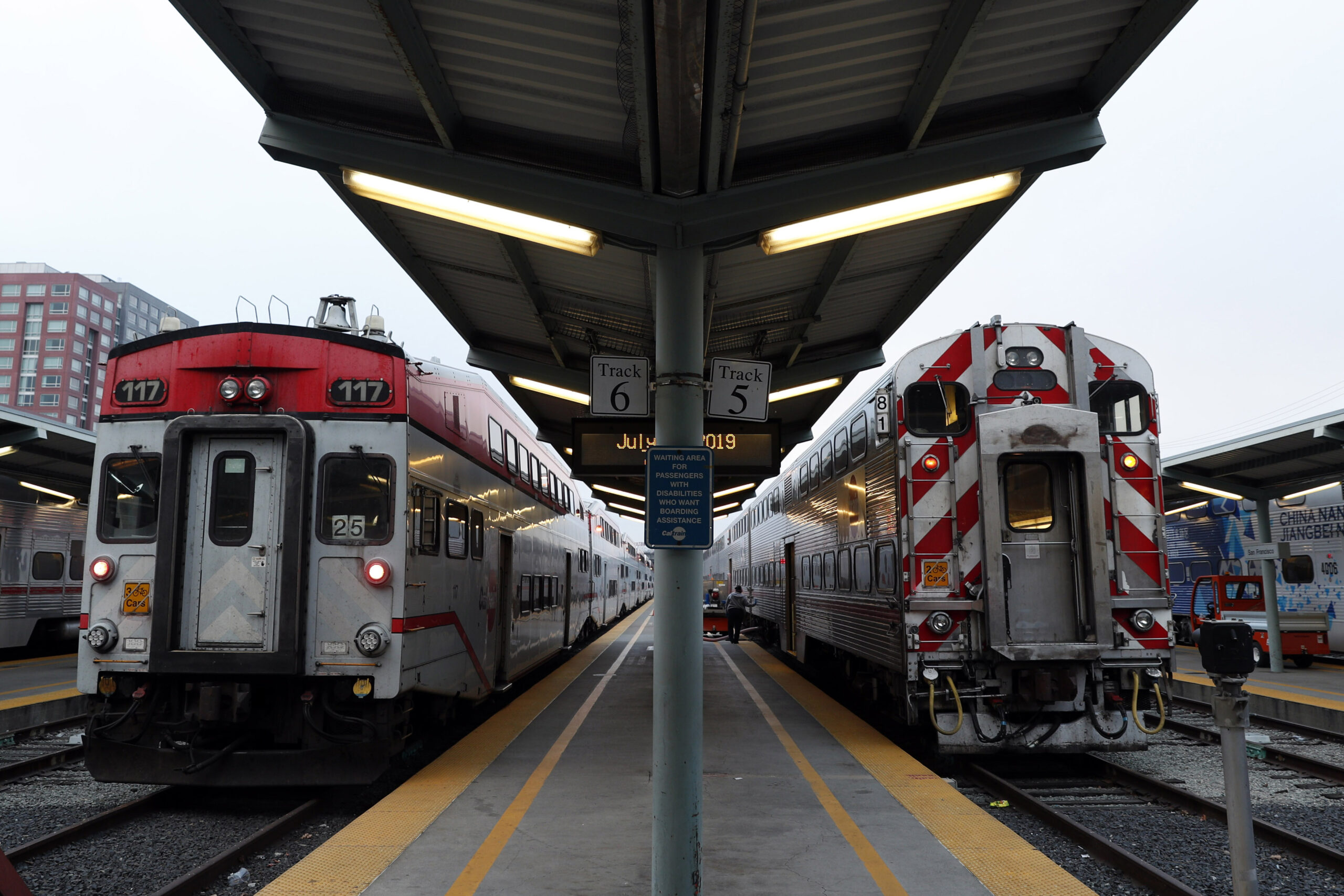Caltrain’s cumulative operating deficit may exceed half a billion dollars over the next decade without significant changes in ridership, funding and other factors, according to a new report on the transit system’s financial outlook.
Caltrain has recovered just 26% of its pre-pandemic ridership as of November 2022, the lowest rate among the Bay Area’s major public transportation systems, according to a report by the consulting firm Bell Burnett & Associates presented Thursday to Caltrain’s governing board.
Passengers who ride Caltrain at least four times per week fell by nearly half. In 2019, 68% of Caltrain riders rode four or more times a week.
Caltrain’s future is complicated by San Francisco having one of the worst economic recoveries from the Covid pandemic in North America.
As a result, Caltrain’s annual deficit based on projected service and ridership is expected to eclipse $50 million per year as soon as the 2025 fiscal year and reach as high as $84 million by the 2033 fiscal year.
That cumulative deficit would reach an estimated $560 million over the next decade, Alex Burnett, a partner at the consulting firm, told Caltrain’s governing board Thursday.
“The fiscal cliff is looming for many, if not all of the transit agencies,” Burnett said. “Federal funding is exhausted and will be soon, certainly over the coming fiscal years. Ridership recovery is slow. […] It is likely that we will need a regional, state or federal funding solution.”
The funding troubles will not affect Caltrain’s efforts to fully electrify its fleet of trains by next year, as the transit network received $43 million in federal funding from last year’s $1.7 trillion federal omnibus spending bill to complete the project by fall 2024.
However, according to the report from Burnett, the operating costs of electrification are expected to rise significantly, eclipsing Caltrain’s annual spending on employee wages and benefits within the next two years.
Caltrain board members expressed opposition to raising fares or cutting service in the short term to improve finances.
Board member and Santa Clara County Supervisor Cindy Chavez suggested lowering fares for a short time to give riders an incentive to return.
“Even if it’s 100,000 riders, getting more people back used to using transit, to me, feels like a really good investment,” she said.
READ MORE: To Spur Development in Transit Corridors, This Caltrain Station May Get Two Seven-Story Buildings
Cutting service would have a limited effect on Caltrain’s budget, Burnett said, as public rail transit has a high amount of fixed costs, like operating and maintenance.
Caltrain could ultimately be a beneficiary of a potential long-term funding measure that regional transportation officials aim to put on a future ballot, but the approval of such a measure is no sure thing.
The Metropolitan Transportation Commission—the region’s transit coordination body—is considering placing a $10 billion housing bond on the November 2024 ballot, The agency says it would support the development of more than 45,000 affordable housing units across the Bay Area’s nine counties.
Transit officials have expressed reluctance to place housing and transit funding measures on the same ballot, anticipating that voters may shy away from approving multiple bond measures or regional tax increases at the same time.
As a result, a potential long-term transit funding measure would likely be placed on the 2026 or 2028 ballots, officials with BART said in January during a discussion of its own financial problems.
A transit funding measure would likely support either the Bay Area’s five main counties—San Francisco, Alameda, Santa Clara, San Mateo and Contra Costa—or all nine counties across the region.
Caltrain would benefit in either case as a rail operator in San Francisco, San Mateo and Santa Clara counties.
Copyright © 2023 Bay City News, Inc.
